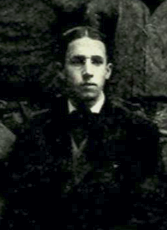
The University of California, Riverside is a public land-grant research university in Riverside, California. It is one of the ten campuses of the University of California system. The main campus sits on 1,900 acres (769 ha) in a suburban district of Riverside with a branch campus of 20 acres (8 ha) in Palm Desert. In 1907, the predecessor to UCR was founded as the UC Citrus Experiment Station, Riverside which pioneered research in biological pest control and the use of growth regulators.

The pomelo, from the family Rutaceae, is the largest citrus fruit, and the principal ancestor of the grapefruit. It is a natural, non-hybrid, citrus fruit, native to Southeast Asia. Similar in taste to a sweet grapefruit, the pomelo is commonly consumed and used for festive occasions throughout Southeast Asia and East Asia. As with the grapefruit, phytochemicals in the pomelo have the potential for drug interactions.

Citrus × meyeri, the Meyer lemon, is a hybrid citrus fruit native to China. It is not a lemon, but is instead a cross between a citron and a mandarin/pomelo hybrid.

The blood orange is a variety of orange with crimson, near blood-colored flesh.

The mandarinquat, also misleadingly called orangequat, is any cross between a mandarin and a kumquat. Mandarinquats are members of the citrofortunella group.

An orange is a fruit of various citrus species in the family Rutaceae ; it primarily refers to Citrus × sinensis, which is also called sweet orange, to distinguish it from the related Citrus × aurantium, referred to as bitter orange.

Herbert John Webber was an American plant physiologist, professor emeritus of sub-tropical horticulture, first director of the University of California Citrus Experiment Station, and the third curator of the University of California Citrus Variety Collection. Webber was the author of several publications on horticulture, member of numerous professional horticultural and agricultural associations. He coined the word "clone" in 1903 and was the first to use it to describe a colony of organisms derived asexually from a single progenitor.

Sweet lemon and sweet lime refer to groups of citrus hybrids that contain low acid pulp and juice. They are hybrids often similar to non-sweet lemons or limes, but with less citron parentage. Sweet limes and lemons are not sharply separated:
The sweet lime, Citrus limettioides Tan., is often confused with the sweet lemon, C. limetta Tan., which, in certain areas, is referred to as "sweet lime". In some of the literature, it is impossible to tell which fruit is under discussion.

Aonidiella aurantii or red scale is an armored scale insect and a major pest of citrus. It is thought to be a native of South China but has been widely dispersed by the agency of man through the movement of infected plant material. In the United States it is known as California red scale. It was first found in California between 1868 and 1875, apparently brought there on planting material imported from Australia.

The ponderosa lemon is a citrus hybrid of a pomelo and a citron. It is not the same as the 'Yuma Ponderosa' lemon-pomelo hybrid used as citrus rootstock.
The University of California Citrus Experiment Station is the founding unit of the University of California, Riverside campus in Riverside, California, United States. The station contributed greatly to the cultivation of the orange and the overall agriculture industry in California. Established February 14, 1907, the station celebrated its 100th anniversary in 2007.

The UCR Citrus Variety Collection (CVC) is one of the most important collections of citrus diversity in the world. It is used for research, plant breeding, and educational extension activities on the UC Riverside campus in Riverside, California.
Robert K. Soost was a citrus expert and professor of genetics at University of California, Riverside, and sixth curator of the University of California Citrus Variety Collection.
Alfred Mullikin Boyce was an American entomologist and first dean of University of California, Riverside's College of Agriculture.
Citrus rootstock are plants used as rootstock for citrus plants. A rootstock plant must be compatible for scion grafting, and resistant to common threats, such as drought, frost, and common citrus diseases.
Lowell N. Lewis was an American plant physiology professor. He began teaching plant physiology at University of California, Riverside in 1960. In 1963 he and graduate student Rashad Khalifah discovered a new kind of auxin present in citrus plants. He was promoted to associate professor of horticultural science in 1965. In 1971 he was appointed associate dean of the College of Natural and Agricultural Sciences by the dean, W. Mack Dugger. He left teaching in 1981 when he was appointed vice president of the Division of Agriculture and Natural Resources. In February 1989, he became director of biotechnology company Ecogen Inc. He continued to work for the University as Associate Vice President for Programs, Agriculture and Natural Resources until his retirement in April 1991. Lewis mentions in a self-published book that he was named coordinator of relations between the University of California and Catalonia by a 1995 bilateral academic agreement.

Leon Dexter Batchelor was an American horticulture professor. He was the longest-serving director of the University of California Citrus Experiment Station.

Comperiella bifasciata is a parasitic wasp species in the genus Comperiella in the family Encyrtidae. It is used in biological control of California red scale and yellow scale of citrus.
Aonidiella citrina or yellow scale is an armored scale insect from the family Diaspididae. It feeds by sucking sap from plants in a number of plant families, but is mostly known for being a pest of citrus.

The New Zealand grapefruit, also known as the Poorman, Poorman orange, poorman's orange, poor man's orange, and goldfruit, is a type of citrus fruit grown in New Zealand. Despite its name, it is not genetically a true grapefruit, but rather is believed to be a hybrid between a pomelo and a mandarin or tangelo.














